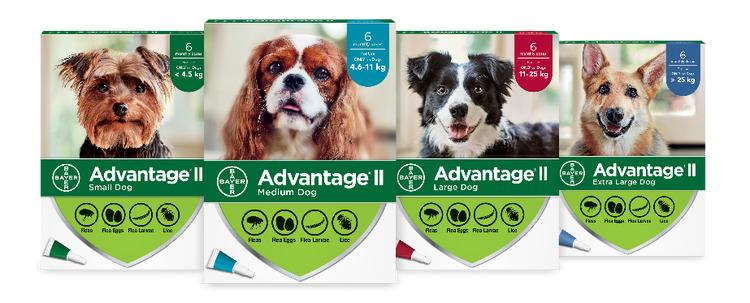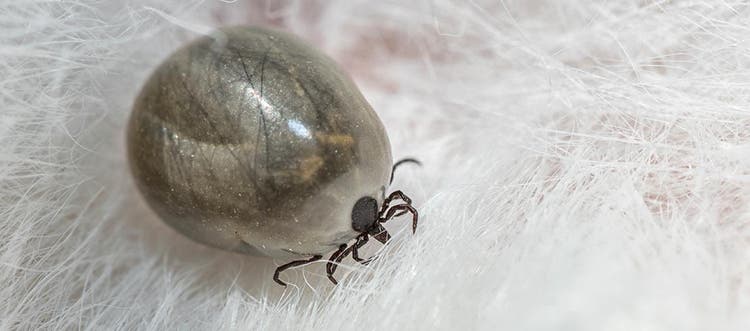A question veterinarians are often asked is: “How often should I treat my dog for fleas?” The answer very much depends on the product you use. However, contrary to popular pet owner belief, fleas aren’t always seasonal – they can actually be a year-round risk. That’s why flea prevention for your dog or cat should be a regular entry on the kitchen calendar.
There are all sorts of flea treatments out there, so it can be hard to know which is best for your perfect pooch – topicals, sprays, collars or pills? They all work differently and for varying periods.
How often you need to apply an effective flea treatment depends on the product you choose. Here’s a handy overview to help you pick the most convenient treatment for your dog and your lifestyle.
Flea shampoos and sprays
If you’ve spotted a flea on your dog, a bath with an effective flea shampoo is often the first step to kill the fleas feeding on your best friend. Washing those fleas out of your dog’s fur is a great way to take immediate action and ease your pet’s discomfort from itchy bites and flea allergies.
Flea shampoos can be a lot of work, so it’s important to know that you can’t rely on flea shampoo alone to rid your pet of fleas because these products don’t provide residual activity. This means that the shampoo only kills fleas while you’re shampooing it into your dog’s fur – but it doesn’t provide lasting protection. Once your dog has dried off, any fleas nearby can simply hop on board.
Treating your pet with a long-lasting product in addition to shampooing offers greater protection by interrupting the flea life cycle.
Flea sprays are used directly on your dog but must be designed for animals. Never use a household flea spray on your pet. Pet flea sprays kill fleas but may need to be re-applied from as often as every few days to every few weeks.
Flea pills
Flea pills must be eaten by your dog and then they work in your dog’s bloodstream, which means fleas must bite your dog in order to be exposed to the active ingredient that kills them. How often you need to give them to your pet depends on the product.
If you have difficulties giving pills to your dog, try a different method of protection.
Although pills can be effective at killing fleas, your pet is still getting bitten. Some dogs are allergic to flea saliva, so bites will trigger an itchy skin condition called flea allergy dermatitis. This can lead to hair loss and make your pet miserable.
Fleas also carry tapeworms, an internal parasite that can be passed on to dogs and cats if the fleas are ingested, for example, while grooming. Tapeworms can be debilitating and may lead to nutritional deficiency and weight loss. That’s why it’s so important for pet owners to regularly use both flea and deworming treatments.
Topical flea treatments
Topical flea treatments are simply applied to the back of your pet’s neck, thereby preventing your pet from picking up fleas.
Some topical products, like Advantage®II flea treatment, work by transporting the active ingredient across your dog’s body on the skin and hair, killing fleas through contact. This means your pet doesn’t need to be bitten for the treatment to work, which helps to reduce the potential risk of a skin allergy.
Getting rid of fleas in your home
If you do spot a flea on your dog or any other pet that hasn’t been treated, you’ll need to act quickly to defend your home. Female fleas can lay up to 40 eggs every day, so the number of fleas in your home and on your pet can multiply rapidly.
By using an effective flea treatment on all your household pets, you’re protecting both your beloved bundles of fur and your home from an infestation.
There are some key things you can do to avoid suffering from a flea infestation at home:
- Treat all household pets regularly for fleas – fleas will jump onto all animals in the home, so treat all furry pets (cats, dogs, rabbits and others) regularly for fleas to ensure they’re protected at all times.
- Regularly wash pet bedding – thoroughly clean pet bedding in a hot wash (60 degrees Celsius) to kill fleas and their eggs.
How often should I treat my puppy for fleas?
Puppies under the age of eight weeks usually stay inside and are rarely exposed to fleas. During this time, it’s important to ensure that all other pets that come into contact with your puppy are treated against fleas. Talk to your veterinarian before treating a dog that is nursing her puppies.
When your puppy starts venturing outside, it must be given a flea preventative. All flea products state a minimum age of use, and your veterinarian can assist you if you are unsure of which treatment to use.
Do I need to treat my dog for fleas during the winter months?
It’s a common pet owner misconception that fleas are only a summer problem. Although adult fleas prefer warmer environments, they still exist during the winter months, so you should treat your dog for fleas year-round – not just in the warmer months.
In fact, flea eggs, larvae and pupae can be found in the home anytime and in the pupal stage can lay dormant for several months, so you may not be aware you have fleas in your home until you turn on the heating system and they begin to hatch. If they are then able to feed on your dog because it’s not protected, you may suddenly find your home is infested.
When should I treat my dog before they stay at a kennel?
Most kennels will require you to treat your dog for fleas before they board.
Your flea treatment schedule will depend on the product you are using. For example, if you’re using a monthly topical treatment, you will need to ensure it is given at the correct time each month and inform the kennel if it needs to be reapplied while you are away.

Advantage®II for Dogs
Advantage®II is a fast-acting flea treatment for dogs that protects against fleas, flea eggs, flea larvae and lice.









